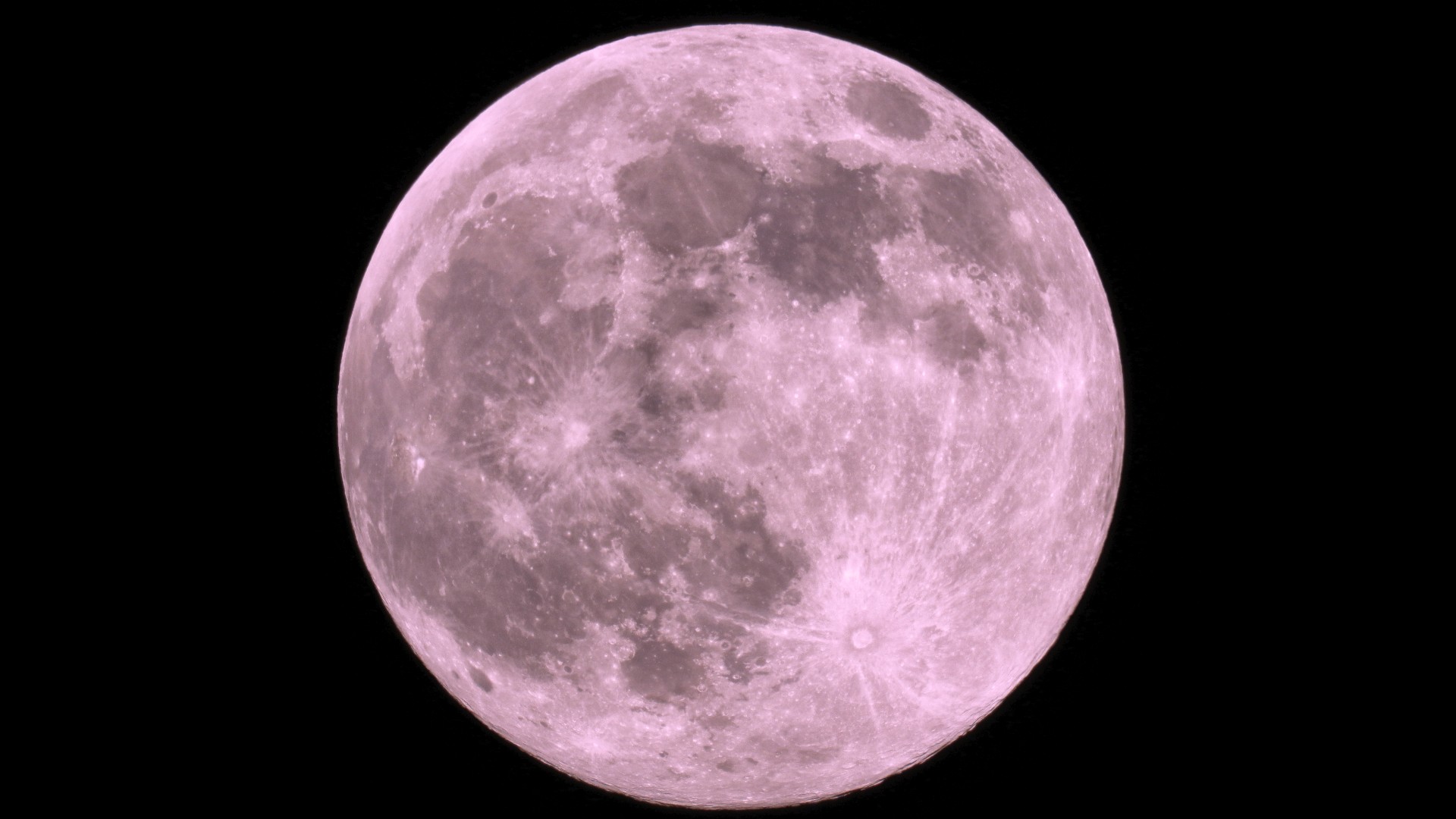
This month's full moon, known as the Pink Moon, will be at its fullest on Thursday, April 6, 2023, and will shine close to the bright star Spica. The moon will also appear bright and full on Wednesday and Friday.
According to Timeanddate.com, April's full moon is called the Pink Moon after the pink phlox wildflowers that are native to North America and often bloom in April. Other names for April's full moon include the Breaking Ice Moon, Budding Moon, Awakening Moon and Egg Moon. Many Anishinaabeg, or Ojibwe, Indigenous people of the Great Lakes region know it as Popogami Giizis, or Broken Snowshoe Moon, according to the Center for Native American Studies.
Related: What is the moon phase today?
This month's full moon also gets the name Pesach or Passover Moon, as well as Paschal Moon for its associations with religious festivals. The Jewish festival Pesach or Passover begins at sunset on Wednesday, April 5, and ends at nightfall on Thursday, April 13, 2023. Meanwhile, the date of the Paschal Moon is how the date of Easter is calculated, as Easter is held on the first Sunday after the first full moon of spring. Western Christianity will be celebrating Easter on Sunday, April 9, 2023 — the Sunday after the Pink Moon. According to NASA, Eastern Orthodox Easter will be a week later on Sunday, April 16.
In the Hindu lunisolar calendar (a combination of the lunar and solar calendars), this full moon marks the Hanuman Jayanti festival, while for Buddhists in Sri Lanka, it's Bak Poya.
The best time to watch the full moon rise in the east will be Thursday, April 6, when it will rise shortly after sunset. Check the times of moonrise and moonset for your location and find a place to observe from that has a low view of the eastern horizon.
Spica, the bright star in the constellation Virgo,will be about 8 degrees to the lower left of the Pink Moon on the night the moon is fullest according to NASA. The following night, Friday, April 7, will see the waning gibbous moon just 3 degrees from Spica.
A rising and setting full moon looks orange when it's seen close to the horizon because of Rayleigh scattering. The light from the moon has to travel through more of Earth's atmosphere to reach the observer. That means the shorter wavelengths of blue light are scattered as they strike molecules in the atmosphere, while longer-wavelength reddish and orange light more easily passes through. Rayleigh scattering is also why the sky is blue and sunrises and sunsets are reddish.
After the Pink Moon, the next full moon will occur on May 5. This Flower Moon, also called the Corn Planting Moon and Milk Moon, will move into Earth's outer shadow in space to cause a penumbral lunar eclipse.







